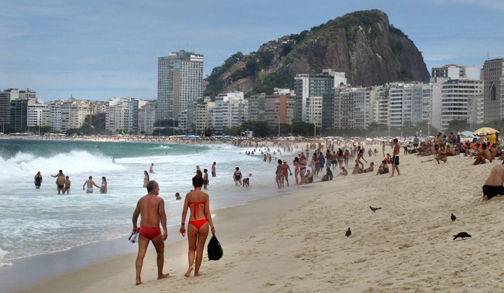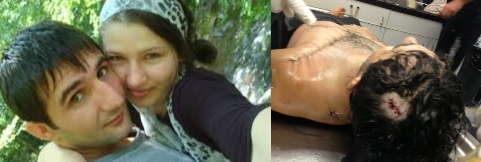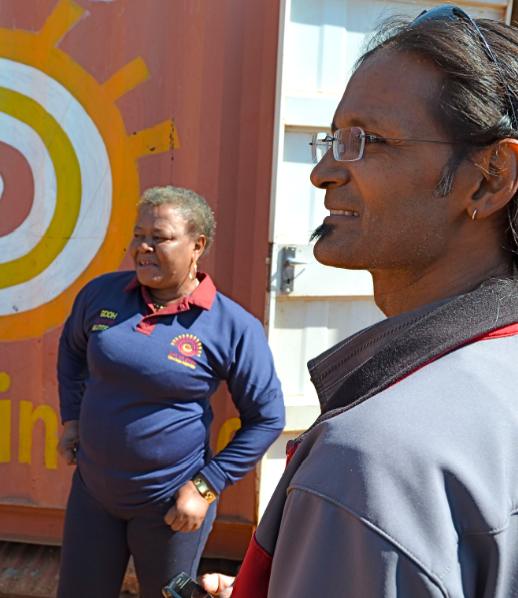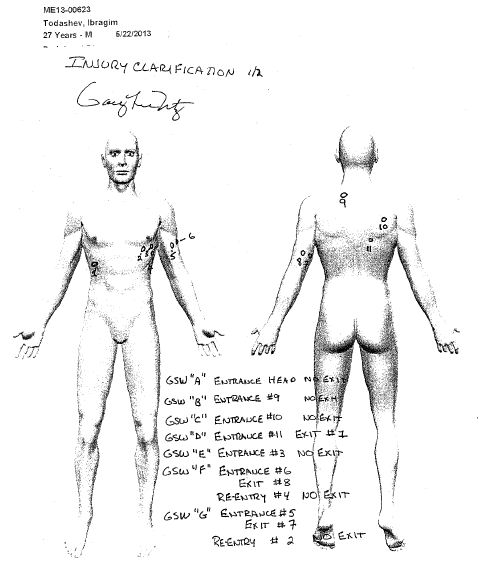In the voluminous report issued by Florida State’s Attorney Jeff Ashton’s Office on the killing in Orlando last May 22 of a witness/suspect under interrogation by the FBI — an investigation that concluded that the shooting was “justified” — there is not a single mention of the bruise and contusion found on the left side of Boston Marathon witness Ibragim Todashev’s head.
That together with the lack of explanation for three shots in the center of the back raise a suspicion that Todashev may have been shot while trying to flee a brutal interrogation, and then killed, possibly while trying to surrender.
~~~~~~~~~~~~~~~~~~~~~~~~~~~~~~~~~~~~~~~~~~~~~~~~~~~~~~~~~~~~~~~~~~~~~~
UPDATE!
In an earlier article in Counterpunch magazine I suggested that if the killing of Todashev by the FBI was a deliberate action, now being covered up as a justifiable homicide, one possible explanation might be that, as Ibragim Todashev’s mother-in-law Elena Teyer suggests, Todashev “knew too much” about Tamerlan Tsarnaev. I mentioned the fact that the FBI has been deeply involved in orchestrating all but one of the 41 terrorist plots since 2011 that it claims to have “prevented” or “disrupted,” and wondered whether the Boston Bombing might be one such plot that got away from them somehow or went awry. Now a report in the Boston Globe saying that lawyers for Dzhokhar Tsarnaev, Tamerlan’s younger brother who is facing capital charges for the bombing, are saying that back a year before the bombing, the FBI at least sought to get Tamerlan to become an FBI informant. Perhaps the lawyers are wrong an the FBI succeeded, and doesn’t want the world to know that he was on their payroll and perhaps Todashev had learned that from his friend Tamerlan.
One more reason not to take this shooting of Todashev at face value.
~~~~~~~~~~~~~~~~~~~~~~~~~~~~~~~~~~~~~~~~~~~~~~~~~~~~~~~~~~~~~~~~~~~~~
First about the bruise wound, which Orange County/Orlando Deputy Chief Medical Examiner Gary Utz told me, in an exclusive interview conducted in the week before the release of Ashton’s report on the case appeared to be the result of Todashev’s having been “forcibly struck,” blows out of the water the entire story of this case, as “reconstructed” by both Ashton’s office and the FBI and US Justice Department.
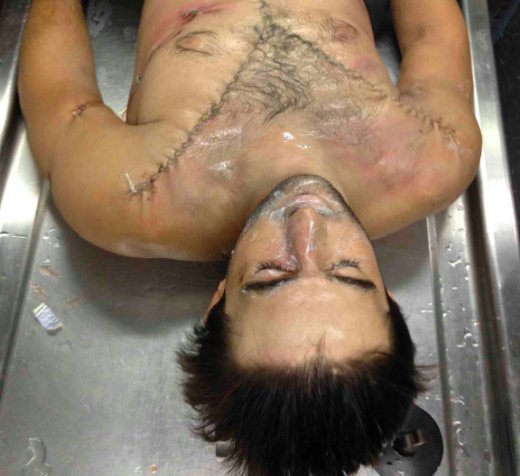 Note the bruise and contusion on the left side of Todashev's head, indicating, according to the coroner who examined the body, that he was “forcibly struck”
Note the bruise and contusion on the left side of Todashev's head, indicating, according to the coroner who examined the body, that he was “forcibly struck”
These agencies all have Todashev sitting at 11:30 pm in his apartment at the end of a four-and-a-half hour grilling, calmly “confessing” to participation, along with Boston Marathon bombing suspect Tamerlan Tsarnaev, in a vicious 2011 triple murder of three small-time drug dealers in Waltham, Mass., and starting to write down his confession on a couple of sheets of lined white paper. Out of the blue, they claim he “suddenly” upends the coffee table in front of the bed where he is sitting, tossing it at the head of the FBI agent sitting across from him, runs for the front of the apartment, and then turns and charges towards the FBI agent and Massachusetts State Trooper who have been interrogating him. As he attacks, the agent fires three rounds, causing him to stumble forward, but he “incredibly” rises and continues his attack, at which point he’s shot four more times and falls to the floor dead.
As I wrote yesterday, there’s a major problem with this account: It’s not the one provided by either of the two lawmen on the scene, but rather is an FBI composite that merges two wildly divergent accounts — one by the trooper that Todashev him running straight to the front door, grabbing a metal broomstick or rod leaning there, turning and brandishing it, and the other that has him running first into the kitchenette area, that is separated by a waist-high counter from the rest of the room, rifling through a drawer of kitchen implements, then running out of the kitchenette and rounding towards the agents in the living room before being shot. Clearly one or both of those conflicting accounts is untrue. He can’t have done both, as the merged “account” has him doing (State’s Attorney Ashton lamely insists the two accounts are “basically consistent”)



